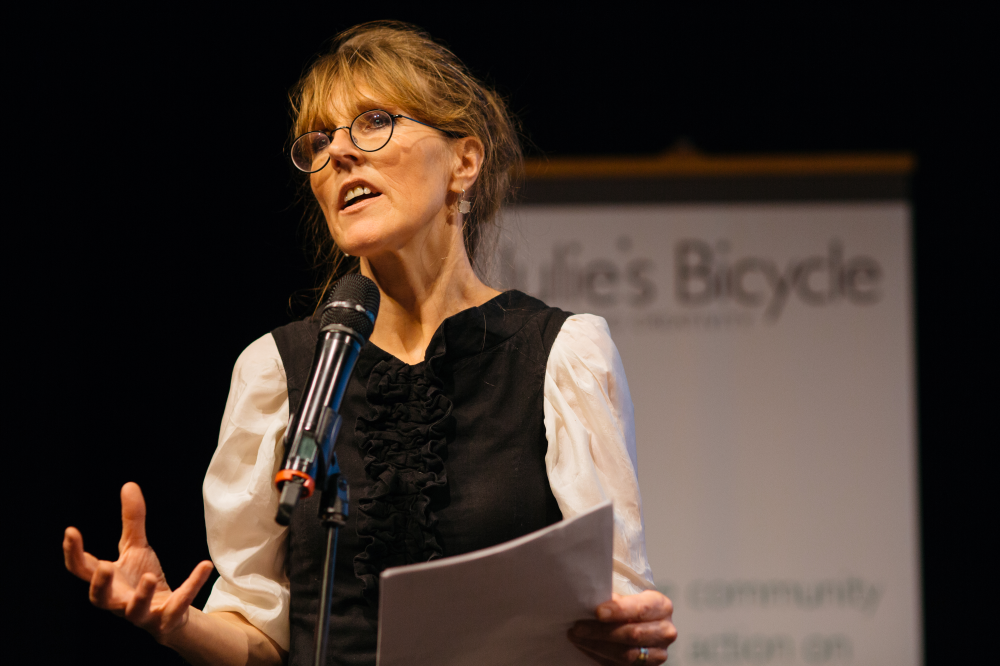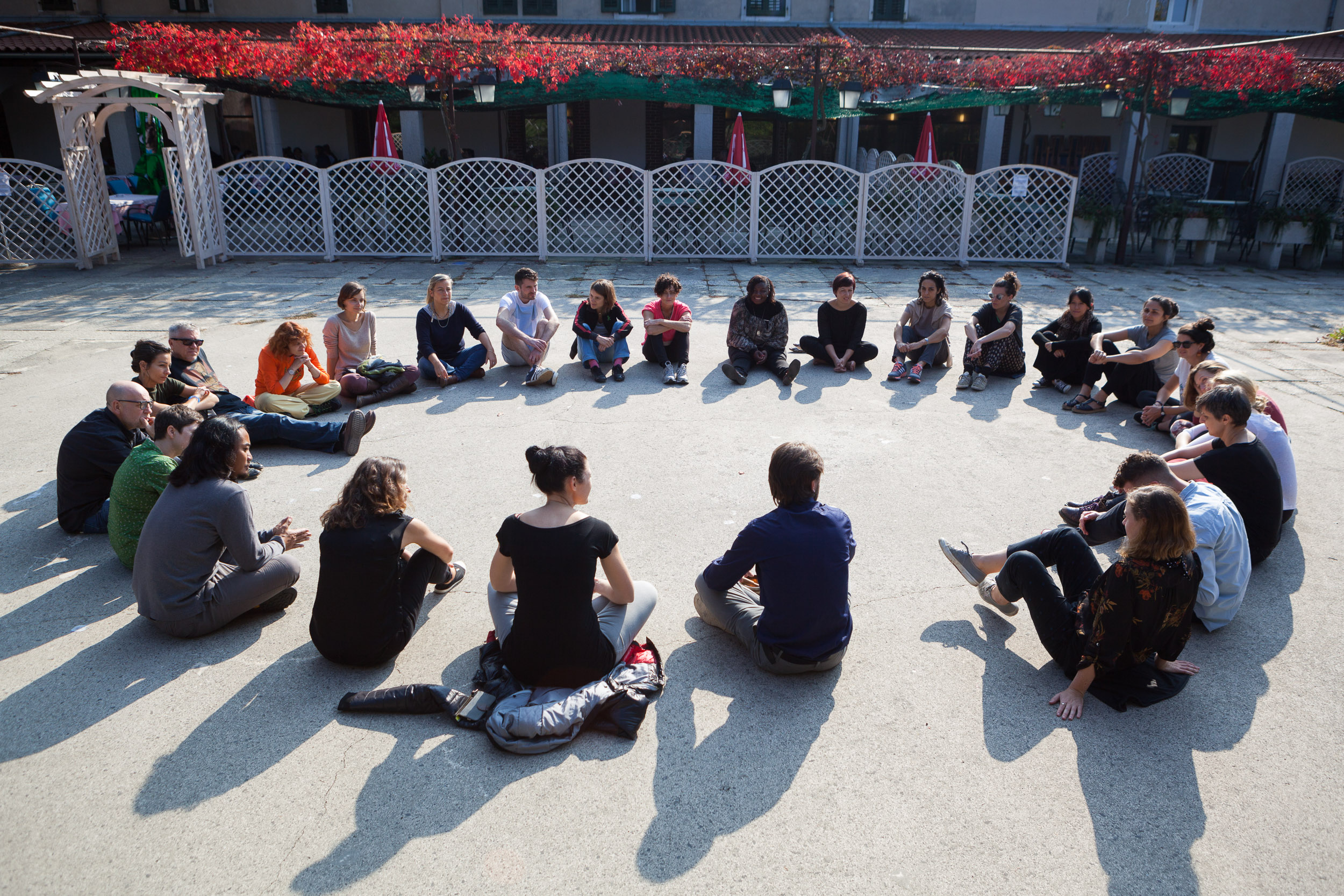My Unexpected Neurological Shift
How to keep a cultural ecosystem in balance
As we move beyond pandemic times, my agenda is beginning to fill up again with actual—physical—meetings. Is it business as usual? I can sense that my mind has shifted. As Executive Director of ELIA, a globally connected European network for higher arts education institutions, I have been part of the SHIFT project for more than a year now, leading the delivery of work concerning the climate crisis. This has allowed me to delve deeper into the topic, learning about greenhouse gas emissions, carbon footprints, and ways to adapt the work of cultural organisations to achieve a better balance for the climate.
A critical aspect in this is leadership. And now my next trip needs to be planned. As a cultural leader, I feel called upon to lead the way. How will I get from Amsterdam to Vienna? As it turns out, there’s a night train. Disappointingly, it’s twice as expensive as flying. Seriously? Eighteen months ago, the answer to this dilemma would have easily landed on the side of the budget. I find that now, everything inside me is resisting this choice. Rather, now I am thinking: How can I avoid that airplane at all costs? What changed?
Alison Tickell, CEO of Julie’s Bicycle (JB), has an answer for me. She calls this a neurological shift. Considered by many to be one of the most influential figures in the creative climate movement today, Alison is the founder of London-based Julie’s Bicycle, a non-profit foundation dedicated since 2007 to mobilising the arts and culture sector to act on the climate and ecological crisis. Speaking via Zoom on an early June morning in 2021, she says:

The only approach to climate is an embodied approach. We need to achieve a neurological shift—we need to actually rewire our neurological pathways, because creating change is not just to do with what we think, it’s as much to do with how we do things. We know that if we repeat patterns of thought, or patterns of behaviour, they hardwire. We need to rewire.
Acknowledging the existence and possibility of a neurological shift is indicative of JB’s systems approach to thinking about climate. The ‘system’ in question is an ecosystem of practice in the cultural space, which is built on the seven creative climate trends that Alison and her team have identified on the basis of their research:
These seven trends form an interconnected and symbiotic ecology of culture that exhibits the ebbs and flows of any system.
Alison: We found that, like any good ecosystem, you cannot overemphasise one thing at the expense of the others. Culture has always overemphasised the artist and the artistic content at the expense of developing more iteractive practice, or a more community-based practice, or more sustainable practice. Being almost neurotically focused on only the quality of the art or the “bling” of the artist has impoverished our thinking about the other parts of the ecosystem. It’s time to get the cultural creative sector to think about balance, the kind of balance where the mitigating forces are the constraints of environment, climate, and justice. These are the lodestones around which an ecosystem really works well.
My reason to reach out to Alison had been to find out more about the importance of leadership when it comes to climate change. JB offers the Creative Climate Leadership (CCL) programme, which has its foundation in a systems approach and the seven creative climate trends. Recognising that the neurological shift needs to happen one by one, focusing on individuals seemed a much-needed next step when, a few years ago, the Creative Climate Leadership programme was started. The six-day intensive training brings together a diverse group of artists, activists, organisational leaders, policymakers, and even funders. Alison explains that in CCL, all participants are part of the ecosystem:
The idea of exercising influence is really important. A crucial question the programme asks is: Where are your leverage points? Where can you affect change directly? Who do you need around you to have powerful influence? This way, we develop an ecology of practice within CCL so that people can work together to make change happen.
CCL is an intensive programme consisting of a combination of presentations, conversations in small groups, and plenary sessions/discussions. Authentic leadership is asked for, as participants learn about change processes, different models of change, and different models of leadership. JB covers the science, history, and politics of climate and justice. Sadly, to date, CCL does not have structural funding; it can only exist in collaboration with strong partners, such as the Creative Europe programme in 2016–2019, or more recently, the Swedish CCL edition supported by the Swedish Postcode Foundation (and partnered with Diego Galafassi and the Lund University Centre for Sustainability Studies). At the end of the programme, participants are sent off to develop a new initiative of their own, under the header ‘Creative Climate Leadership in Action’. JB acts as mentor to all teams or connects them to other members of their vast network.
Alison: At the heart of all of it is leadership—not just leadership for its own sake, but new leadership that lives by a new way of doing things.
Often feeling that my efforts are too small to ever make a difference, I asked Alison whether the impact of CCL goes beyond the individuals who take part in the programme. ‘Yes’, she answered. ‘Every single one of the people that has participated in CCL could generate a huge amount of impact’. Creating a community out of the project, benefiting from companionship, a common reference to an intense experience, and learning from each other—this is where the movement starts. The snowball effect has not always gotten off the ground. But almost by divine intervention, it is the US cohort, having finished the training literally one day before the lockdown in March 2020, that has stuck together the best, meeting online once a month and still developing initiatives together. Krista Bradley, Director of Programs and Resources at the US-based Association of Performing Arts Professionals (APAP), calls that CCL training a ‘life-changing experience’. She acknowledges the bizarre circumstance in which she and her US colleagues were working to address the urgency of one global crisis while another was upon them. ‘But then, because of the pandemic, we actually started putting some of these aspects into practice right away—like not touring’. She says the existence of allies, advocates, and confidantes is critical in this effort, working in a sector that is (understandably) desperate to get back to business as usual. It’s like a ‘drumbeat’ reminding her of the responsibility that she and her colleagues have taken on.

Many CCL editions have been international, providing a wide range of perspectives and different cultural reference points. The recent Swedish episode (the first-ever online edition) targeted the Swedish cultural community. Speaking to Maria Rylander, Swedish artist and coordinator of Knutpunkt in Gothenburg, a network of jazz venues, about her experience with the Swedish CCL which ended only one week before our call, she sounds excited to get to work with her Swedish colleagues. Asked about the impact that this local version of the CCL might have, she likens it to an explosion: ‘I can already see a shift in the Swedish cultural sector—the aspect of climate is now an obvious point to consider when making plans’. Alison noticed this potential as well—when CCL goes local, a movement can develop that creates change very effectively, because there is a larger mass of influencers at work in the space.
Maria feels that funders should play their part by challenging the cultural sector to consider the climate as part of their plans. ‘To give an example, in Sweden we have been answering questions for years about gender equality—they want to know what you are doing about it, and that you are thinking about it. “Do you have a plan?” they ask us. And yes, this puts the topic on the agenda. The gender issue has been on funding applications for ten years or so, and now it’s something you don’t have to think about anymore—it’s automatic’.
I recognise that this refers to that neurological shift that Alison was talking about. Listening to Maria, I realise this also taps into a larger ongoing debate, certainly in EU circles, on how to green the major funding schemes while considering cultural organisations’ often limited resources. And indeed, there are best practices to follow, says Alison: the Arts Council of England, for instance, requires arts organisations to use the JB carbon calculator annually as a funding requirement. She feels that this has made a huge difference to the sector in terms of climate literacy. But I digress.
At the heart of the Creative Climate Leadership is capacity building. Alison says: ‘We need to capacity build a cultural sector that will drive a new cultural economy, putting climate, environment, and justice as its driving force. Forget everything else. Once the sector is strengthened, the rest will take care of itself. Every time anybody gets new financial resources or people resources or space resources, the choices made at this juncture can be a manifestation of this green deal. Rather than commissioning a piece of work, we need to look at the future of cultural practice itself, what the infrastructure needs to be, what values are manifesting. It isn’t only about the work—the work will take care of itself. It’s about the people and the institutions, what we are really cherishing here and fast-tracking that movement of change’. A cultural transformation and an ecosystem where the seven elements are in balance.
Knowing that climate change in fact did not slow down during the pandemic, I find it easy to get discouraged. Maria Rylander agrees—she certainly remembers a moment during the CCL programme when she felt that the climate challenges were insurmountable and that she as one individual could not possibly do anything to stop our imminent demise. Help came to her from Alison Tickell, who seemed so excited about the future that she—when asked what she would do with one single superpower—expressed the hope to live to be 150 years old, just to see how it would turn out (knowing that it would).
During our conversation, Krista pointed out that leaders of networks are uniquely positioned to turn their own passion and drive for environmental sustainability in the arts into much larger impact. And so, properly recharged by these wonderful conversations and ready to undergo the CCL programme as soon as I can, I am back to my neurological shift and my decision about Vienna. Given that my travel budget is completely underspent this year due to the pandemic, my choice is clear (and easy): I’m taking the train.
Gute Reise!
Maria Hansen, Executive Director, Project Partner ELIA.